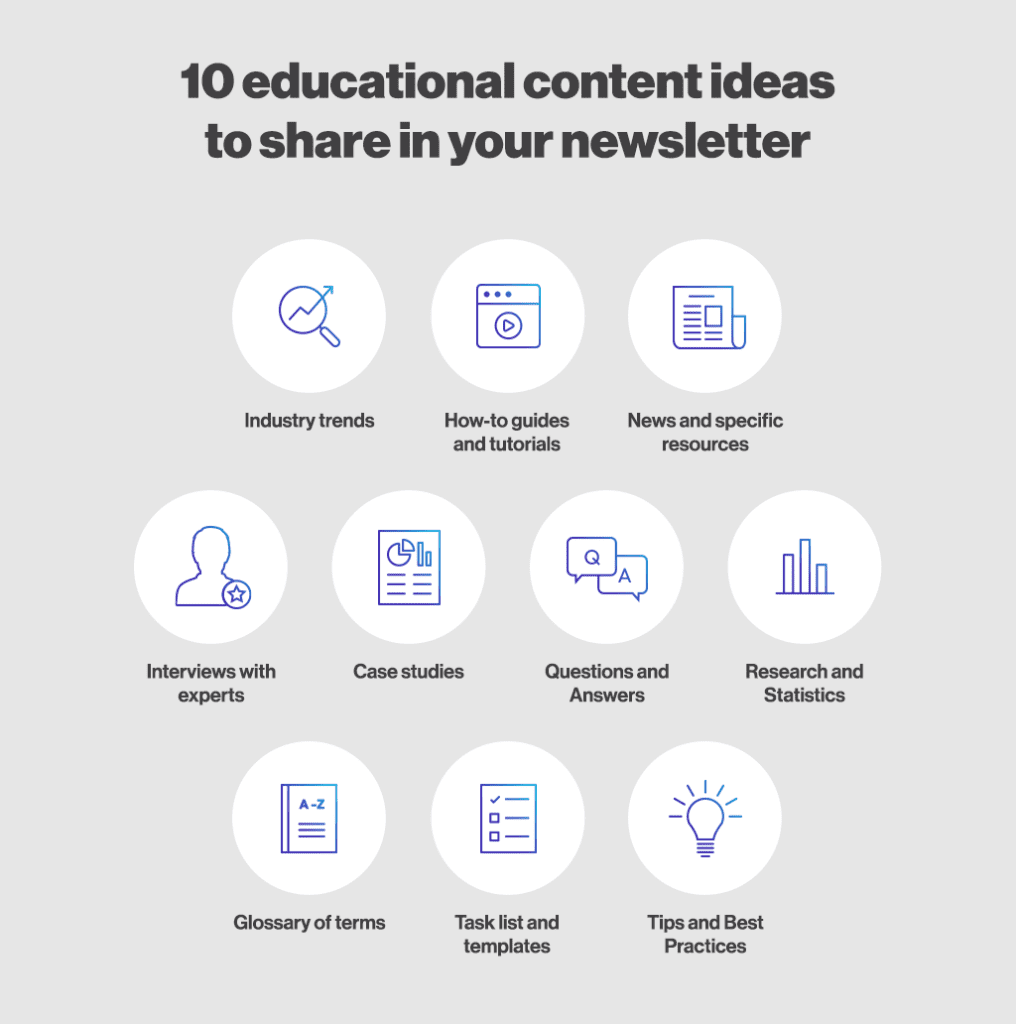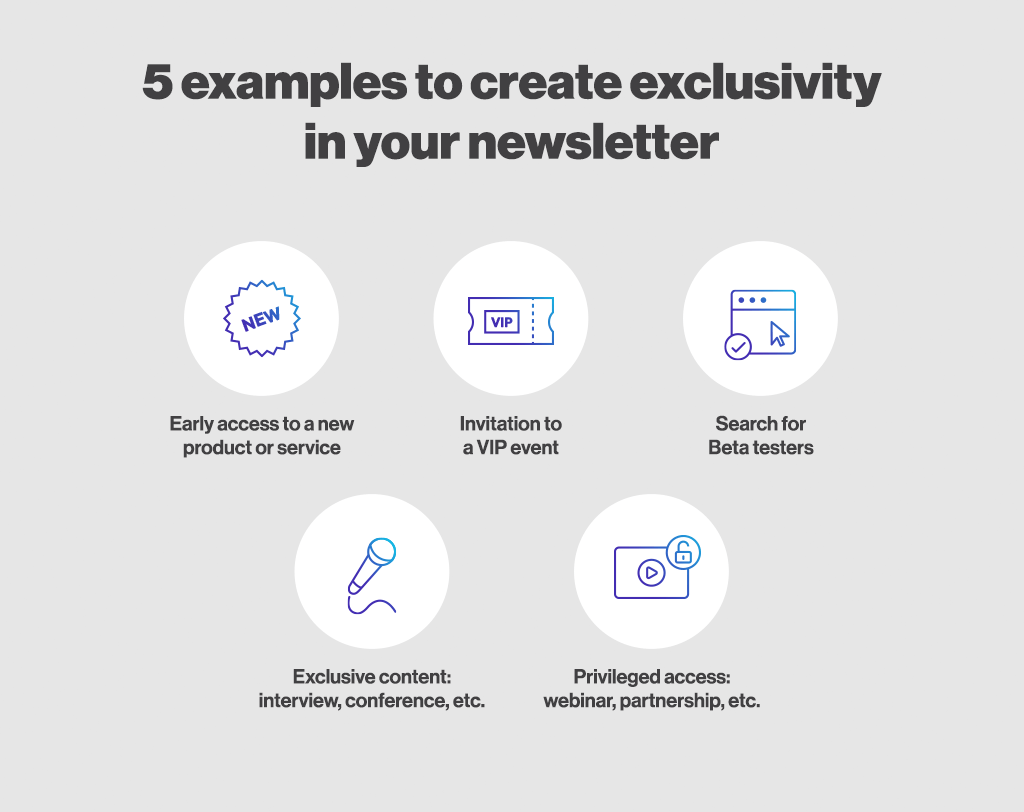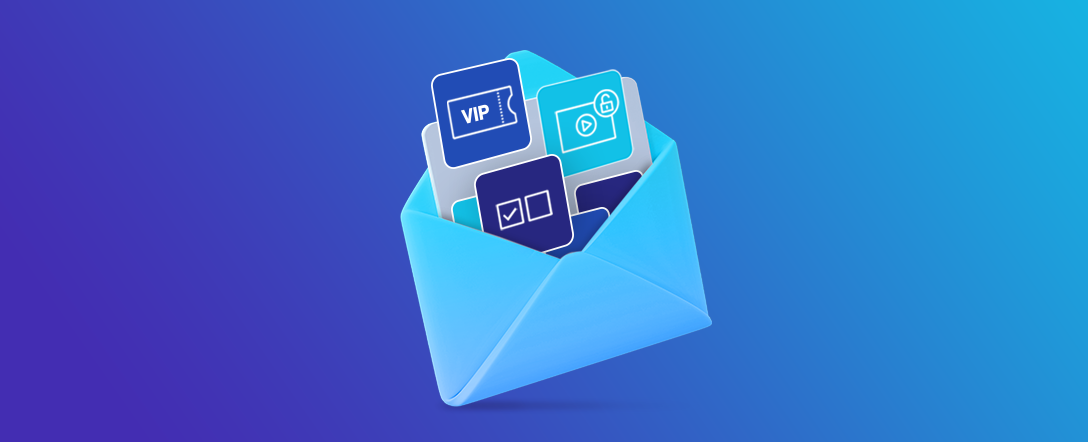Email marketing is an indispensable tool for any business looking to maintain a relationship with its customers and drive sales. However, with the amount of emails sent and received, it can be difficult to stand out and get the results you want.
It’s well known that one of the ways to increase engagement with your customers and prospects is to offer discounts. However, discounts are not always the best option.
In this article, I will explain 7 tips for boosting email campaign effectiveness without discounts. From personalized content to exclusive access, these strategies will help you build a stronger relationship with your customers and increase their loyalty to your brand.
- Educational content
- Exclusive access
- Personalized recommendations
- Invitation to an event
- Surveys and comments
- Community building
- Industry News
1. Educational content

Provide valuable information and insights through educational content such as blog posts, case studies or videos. Share them with an action button (CTA) leading to your website. This way, you will increase your online traffic. Here are some ideas for educational content that you can easily share in a newsletter:
Industry Overviews and Trends
Provide updates and analysis on the latest developments and trends in your industry, as well as expert opinions and predictions.
Practical guides and tutorials
Share step-by-step instructions or tutorials on how to use your products or services.
Industry-specific news and resources
Compile and share news articles and resources of interest to your audience, and provide your own opinions and analysis on current events.
Interviews with experts
Conduct interviews with industry experts or thought leaders and share their insights and advice with your audience.
Case Studies
Share case studies or success stories that demonstrate the value of your products or services. Show how other companies or individuals have succeeded.
Question and answer sessions
Include a Q&A section in your newsletter where you answer frequently asked questions. You can also address common concerns and misconceptions in your industry.
Research and statistics
Share research or statistics that are relevant to your industry or your clients’ industries.
Glossary of terms
Create and share a glossary of terms specific to your industry or business and explain them in a simple way. For example, in the financial sector there are many abbreviations and it is easy to get lost; RRSP, RESP, TFSA, RVER, etc.
Lists and templates
Share a to-do list. For example, “Steps to take before sending a newsletter” that your audience can download and use as a tool or template.
2. Exclusive access

Give your subscribers exclusive access to your new products or services, or offer them relevant content. Who doesn’t like to know about news before it’s released to the general public? This is a simple way to create excitement and make your subscribers feel important. Here are some ideas for exclusive access examples for your email marketing strategy:
Early access to new products or services
Offer your contact list the opportunity to preview or purchase a new product or service. However, make sure you have enough inventory to provide for the merchandise at your official launch.
VIP Events
Invite your newsletter subscribers to exclusive events, such as product launches, webinars or conferences. You could even do an event with limited seating.
Beta testers
Just launched a new product or feature? Allow your most active subscribers to participate in beta testing.
Exclusive content
Share exclusive content, such as behind-the-scenes footage, interviews or early access to new articles or videos.
Privileged access
Provide early access to conferences and information on new partnerships.
3. Personalized recommendations
Use data such as browsing history and purchase history to create personalized product or content recommendations for your customers. You can also analyze which links your subscribers click on the most for each of your email blasts. If they click on your blog posts often, it means they are interested in learning more. Here are some examples of recommendations you could apply to your email campaigns:
Content recommendations
Use the data from the update profile form to learn about your subscribers’ interests. This way you can recommend articles, videos or other relevant content to them. This could be a list of blog posts to read, workout videos, etc.
Customized surveys
Create customized surveys to gather feedback by using the data you collect on your customers and prospects. You could also make product or service recommendations based on survey results.
4. Invitation to an event
Invite your customers to events, webinars or conferences via email. Here are some examples of events you could invite your customers to:
Product launches
Invite your newsletter subscribers to participate in a product or service launch event, in person or online. This is also a way to offer exclusive content.
Online seminars
Send an invitation to your subscribers to participate in webinars or online workshops that address topics related to your industry. For example, a finance company might offer a webinar on “how to save in a recession”.
Conferences
Insert a link in your newsletter to a registration form for conferences or trade shows related to your industry.
Networking activity
Invite your subscribers to networking events where they can meet other professionals in their industry or in the same region.
Demonstrations
Offer your new subscribers the opportunity to see a demonstration of your application. This example is particularly relevant for software companies (SaaS), as software can take longer to master.
Charity events
If you are an NPO, you could invite your newsletter members to participate in charity events or fundraisers.
Customer appreciation events
Host a party to celebrate with your best customers by sending a VIP invitation.
5. Surveys and comments
Send out a short survey about your products or services to get feedback from your users. Then use that feedback to improve customer satisfaction. Here are some ideas for surveys you can send via email:
Customer satisfaction survey
Send a survey to your newsletter subscribers asking them to rate their overall satisfaction with your company, products or services. A SaaS company might ask about the user experience with your software.
Market Research Survey
Ask your users what their needs, wants and challenges are in your industry.
Net Promoter Score
Use the Net Promoter Score (NPS) survey method to assess the likelihood that your newsletter subscribers will recommend your company to others.
6. Community building
Create a sense of community among your customers by sharing user-generated content and highlighting customer testimonials. Here are some examples:
Content generated by your users
Share content created by your users, such as testimonials or achievements that showcase other customers’ experiences. For example, a store that sells painting supplies could feature artwork created by some of their customers.
Success Stories
Share stories or interviews with customers who have accomplished things or reached their goals by using your products or services. This can be presented as a video, podcast or case study download.
Giveaway or contest
Host or promote a contest or challenge that encourages customers to engage with your brand. You could create a contest on your social media and share it in your newsletter.
7. Industry News
Keep your customers informed about the latest industry news and trends in your newsletter. This way, you show that your company is attentive to market changes and on the lookout for new technologies. Here are two ideas to inspire you:
Sector Updates
Inform your subscribers of updates on the latest developments and trends in your industry, such as new regulations, technologies or market changes.
News by professionals
Share information from trade publications and industry-specific news sources that may be of interest to your audience.
Conclusion
There are many ways to add value to your email marketing campaigns without offering discounts. By applying the above strategies, you can build a stronger relationship with your customers and increase their loyalty to your brand.
Remember, the important thing is to understand the needs of your customers and prospects, and provide them with content that meets their interests. Implementing these strategies will help you create more effective email campaigns and ultimately generate more conversions and sales for your business.
